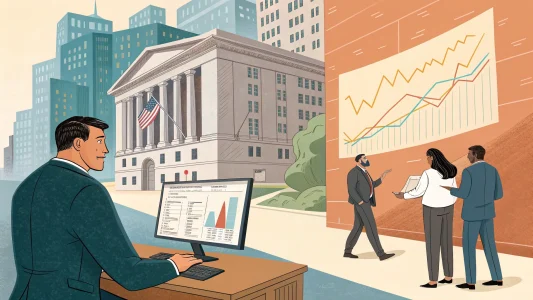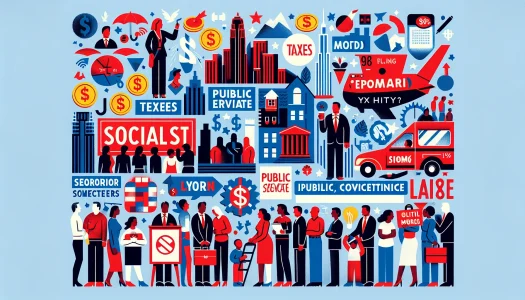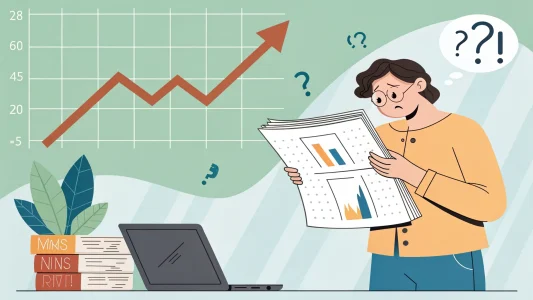A government shutdown is not an abstract headline. It reaches into homes, airports, hospitals, and small businesses. It hits paychecks, disrupts services, and shakes confidence. Here is what stays open, what stops, and how it affects your life and your money—without the noise.
Table of Contents
ToggleWhat Actually Stays Open
Essential programs do not flip off like a light. Social Security and Medicare continue to operate. Benefits continue to flow. The mail keeps moving. These services are funded through dedicated sources or are legally mandated to continue.
Airports remain staffed, although the situation is complicated. TSA agents and air traffic controllers are expected to report. The same goes for border patrol. The issue is pay. When funding lapses, many of these workers are forced to work without pay until a deal is signed. That strains families and morale. It also tests how long people can continue to show up without a paycheck.
Federal courts stay open for a short window. They rely on carryover reserves. When those reserves run out, courts scale back, delay cases, or pause civil matters. That backlog does not vanish after the shutdown. It piles up.
View this post on Instagram
What Closes—And Why It Matters
Permitting and reviews that require fresh appropriations stop. That includes housing permits, drilling approvals, and a range of environmental and safety reviews. When those shut, projects stall. Workers sit idle. Timelines slip. Closing the books later does not erase lost time.
Many administrative offices close or run on skeleton crews. Calls go unanswered. Paperwork piles up. If your business touches a federal process, the pace drops to near zero. That ripple spreads to contractors, suppliers, and local economies that serve these workers and projects.
Who Still Gets Paid
Congress and the White House remain open and paid. That is hard for many to accept when federal workers miss paychecks. Each day this drags on, an estimated hundreds of millions of dollars in wages do not reach federal employees. Those are dollars that do not get spent at grocery stores, restaurants, and childcare centers. The hit moves from kitchen tables to Main Street.
“This isn’t the government running out of money. It’s your least favorite politicians holding the government hostage and peacocking on stage.”
That line captures the core issue. Shutdowns are a political tactic, not a math problem. The Treasury can collect taxes and pay for legally authorized programs. However, when Congress fails to pass spending bills, many parts of the government are unable to spend—even on routine tasks that keep the wheels turning.
The Political Standoff
The conflict sits on well-known lines. Republicans push for spending cuts. Democrats prioritize protecting healthcare programs and other social safety nets. President Trump has urged using the moment to shrink the federal workforce. The result is a power struggle. Each side claims to defend the taxpayer. Meanwhile, families and businesses bear the cost.
I do not pick sides here. The job is to assess the financial fallout and help you prepare. Shutdowns are not new. They happen when negotiation fails. They end only when leaders strike a deal, usually with both sides giving something up. The damage grows with time. The longer it lasts, the harder the restart.
How A Shutdown Hits The Economy
Think of a shutdown as sand in the gears of commerce. Government workers miss paychecks. Contractors pause work. Companies that depend on permits and inspections wait. That lost cash flow stings. It lowers spending in local communities. It delays tax refunds and small business loans tied to federal programs. It interrupts research and training. None of that boosts growth.
Markets watch policy risk, but they focus more on earnings and interest rates. Short shutdowns often have limited market impact. Longer ones raise uncertainty. Investors start asking what breaks next. Confidence matters. When confidence dips, people delay big purchases and hiring. The damage is small at first, then grows.
What You Can Expect Day To Day
- Social Security and Medicare benefits continue.
- TSA, border patrol, and many other essential workers stay on the job but may go unpaid until funding returns.
- Mail delivery continues.
- Federal courts operate until reserve funds run out, then scale back.
- Permitting and approvals for housing, energy, and environmental reviews pause.
- Some federal call centers and administrative offices close or reduce hours.
If You Work For The Federal Government
Missing a paycheck is serious. It affects rent, utilities, and groceries. Many workers receive back pay once the shutdown ends, but that does not cover late fees or stress. If you are in this spot, focus on essential bills first. Talk to your landlord, lender, or utility. Many offer hardship options during shutdowns. Document every call and agreement.
Cut non-essentials. Press pause on subscriptions, dining out, and travel. Use a no-fee credit line sparingly, and only as a bridge. Avoid high-interest payday loans. If you had set up automatic payments, review them now. You want control over cash timing.
If You Are A Contractor Or Small Business Owner
Project delays hurt. Labor costs keep running while invoices wait. Cash management becomes the main task. Review your pipeline. Decide which jobs can move without permits and which cannot. Talk to your bank early. A small line of credit can make the difference between surviving and shutting the doors.
Stay in touch with your team. Explain the plan. If you reduce hours, do it with care and clarity. If you can, cross-train staff to handle work that still moves. When the shutdown ends, backlogs may surge. A prepared team can capture that rebound.
For Retirees And Families On Benefits
Checks continue, but service channels might slow. Online accounts should still work. If you need to speak with an agent, expect longer waits. If you rely on federal nutrition or housing support, watch for local updates. Many programs depend on federal funds but are managed locally. The community level often sets temporary rules during funding gaps.
Investors: How To Think About It
Do not trade on headlines alone. Shutdowns create noise and emotion. Focus on financial plans, risk levels, and time horizons. Historically, markets digest shutdowns and move back to core drivers: profits, employment, and rates. If you hold a diversified portfolio, stick to your plan unless your life has changed.
That said, expect bumps. Sectors with heavy federal ties can lag. Defense, health services with federal contracts, and certain industrials may slow. Small-cap stocks that rely on local demand can wobble if communities see less spending. Dollar-cost averaging can help. It moves money into markets on a schedule, not a hunch.
Why The Dollar Impact Is Bigger Than It Looks
Each missed paycheck has a second-order effect. A federal worker who skips dinner out takes revenue from a local restaurant. That owner delays buying supplies. A vendor cuts a shift. The ripple is real even if it is hard to track. Once the shutdown ends, some spending returns. But not every lost sale comes back.
Permitting delays add another layer. A stalled housing permit means fewer crews on site. That hits hardware stores, concrete suppliers, and electricians. If a drilling permit sits on a desk, a crew does not travel, a hotel does not book rooms, and fuel is not purchased. This is how a policy fight becomes an economic bruise.
What Could Break The Deadlock
Shutdowns end when both sides find enough agreement to pass funding. Sometimes that is a short-term patch that keeps lights on while talks continue. Sometimes it is a full-year deal. Political pressure grows by the day as voters, workers, and businesses speak up. The public does not like missed paychecks or stalled services.
Lawmakers watch two clocks: the economic drag and the political cost. As either one rises, compromise becomes more likely. The timing is impossible to predict, but the pattern is familiar. The longer it lasts, the harder the restart, and the bigger the backlog.
What You Can Do Right Now
There are steps that help, even if you cannot control Washington.
- Build a small cash buffer if you can. Even two weeks helps.
- List your must-pay bills and set priorities.
- Call lenders and service providers early. Ask about hardship plans.
- Delay large purchases if your income is at risk.
- Review your investments, but avoid panic moves.
- If you own a business, map out who pays you and who depends on federal action.
Calls For Cuts Versus Protection Of Programs
Cutting spending and protecting core programs sit at the heart of the fight. Republicans want to trim budgets. Democrats focus on preserving health care programs. President Trump argues for reducing the federal workforce. These positions are not new. The shutdown is a negotiation tactic to gain leverage.
From a financial view, the question is trade-offs. Where do cuts save money without hurting growth? Which programs return value in health, safety, and stability? Those judgments are policy choices. Voters weigh them at the ballot box. In the meantime, the costs of stalemate are real and recurring.
The Human Side
Behind every policy fight are families planning meals and rides to school. Airport workers are struggling to find child care while their pay remains frozen. Small business owners are deciding which bills can be put on hold. I have met many of these people. They do their jobs and pay their taxes. They do not set federal budgets. They live with the results.
That is why it feels like a squeeze. No paychecks. Reduced services. No say. The best we can do is prepare, stay calm, and push for clear decisions from leaders who run the government we fund.
A shutdown isn’t about saving money. It’s a Democrat and Republican power struggle. They point fingers while we’re the ones getting squeezed.”
That captures the mood in plain words. The numbers matter. The impact is felt at home.
Bottom Line
A shutdown is not a sign that the country ran out of money. It is a sign that the people who write the checks could not agree on the terms. Benefits like Social Security and Medicare continue. Many essential workers continue to stay on the job without pay until funding is restored. Courts, permits, and services slow or stop. The economy takes a hit that grows with time.
Protect your household first. Keep cash ready if you can. Talk to lenders early. Stay the course with a sound investment plan. If you run a business, manage cash with care, and keep your team informed. This will end. The key is to get through the gap with as little damage as possible.

















